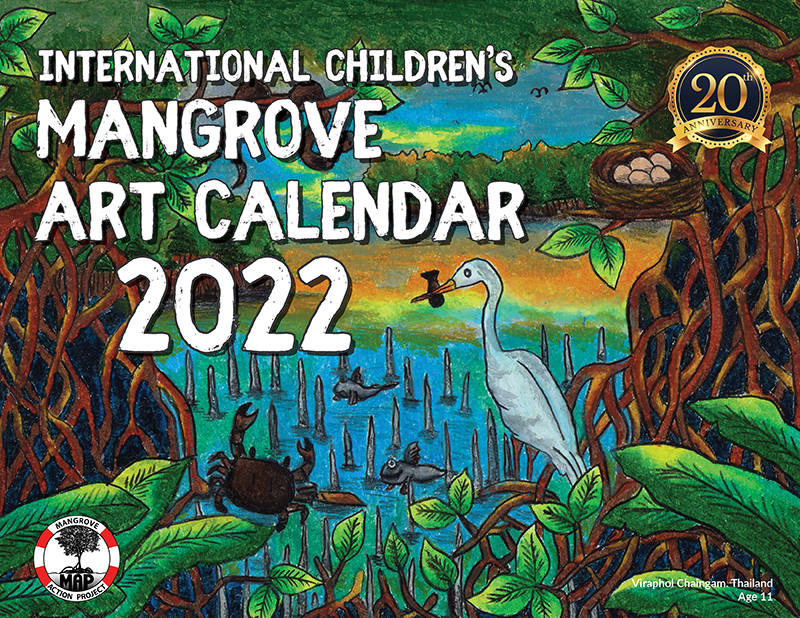MAP Website en Español haga clic aqui FEATURED STORY
An Appeal from our Executive Director for the Mangroves
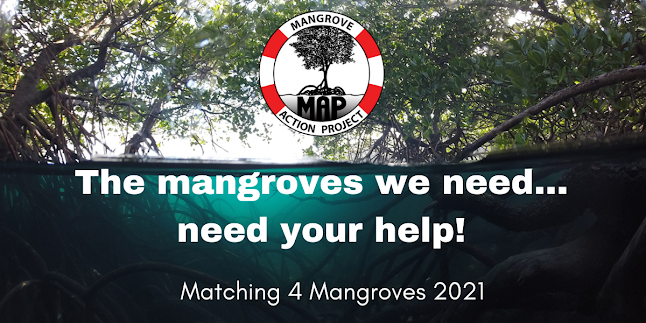
Maybe world leaders are finally reading the writing on the wall? Maybe they finally understand that the recent frightening weather, massive forest fires, droughts and floods are not just chance occurrences but due to our planet-level experiment of increasing CO2 levels from the pre-industrial 280ppm to 415ppm today. There’s no argument about these numbers or the greenhouse gas effect – it’s just straight physics. We can debate the link between CO2 levels and climate change. Or we can take practical action now. Please support MAP to do what the world should be doing, climate change or not – conserving existing mangroves and restoring degraded forests, as fast as possible. Why mangroves in particular? Because they form an amazing intertidal ecosystem that provides all sorts of benefits, local and global, but are under threat from shrimp farming, urban development, road building, sea walls, oil palm expansion, sea level rise and other challenges. MAP is blessed by having a passionate, experienced, highly qualified and loyal team. We need funding to run more capacity-building and outreach programs, and advocate for mangroves at conferences and meetings such as COP26. You can help us to increase MAP’s impact by donating to MAP now. READ MORE

GLOBAL
Many Overheated Forests May Soon Release More Carbon Than They Absorb

GLOBAL – The last decades have been filled with dire warning signs from forests. Global warming has contributed to thinning canopies in European forests and to sudden die-offs of aspen trees in Colorado, as well as insect outbreaks that are killing trees around the world. In many places, forests are not growing back. New research shows that Earth’s overheated climate will alter forests at a global scale even more fundamentally, by flipping a critical greenhouse gas switch in the next few decades. The study suggests that, by 2040, forests will take up only half as much carbon dioxide from the atmosphere as they do now, if global temperatures keep rising at the present pace. The study, published Wednesday in Science Advances, analyzed more than 20 years of data from about 250 sites that measure the transfer of carbon dioxide between land and plants and the atmosphere—the way the planet breathes. READ MORE
AFRICA
Mangrove Biodiversity Management Project Officially Lanched in Lake Piso
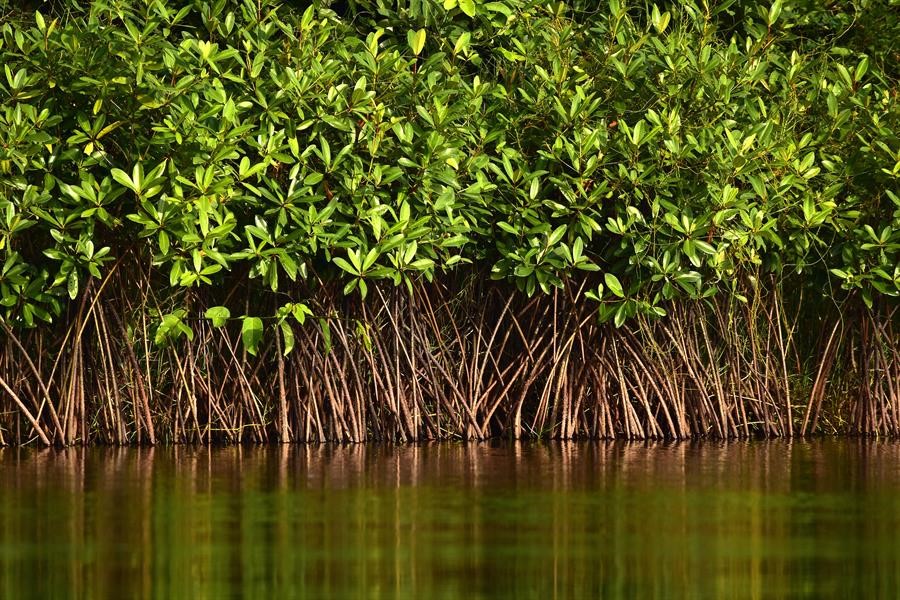
LIBERIA – A grand launch marking the Lake Piso Multiple Use Reserve sustainable Mangrove Biodiversity mangemnt project has taken place in Robertsport City, Grand Cape Mount County with stakeholders unanimously promising to ensure the successful implementation of the project. The project titled: “Managing Mangrove Forests from Senegal to Benin is being implemented by the Forestry Development Authority (FDA) with funding support from the International Union for the Conservation of Nature (ICUN). On December 5, 2020, the FDA and the Wetlands International Africa (WIA) jointly conducted an awareness workshop held at Lake Piso where the Liberian stakeholders were urged to submit proposals in the wake of the euros 9,900,000 grant provided by the European Union to promote, protect and conserve wetlands in 9 West African countries including Liberia. The application for the grant began December 20, 2020-January 20, 2021, and Liberia was one of the successful applicants. READ MORE
AMERICAS
Saving Grand Bahama’s Mangrove Forest
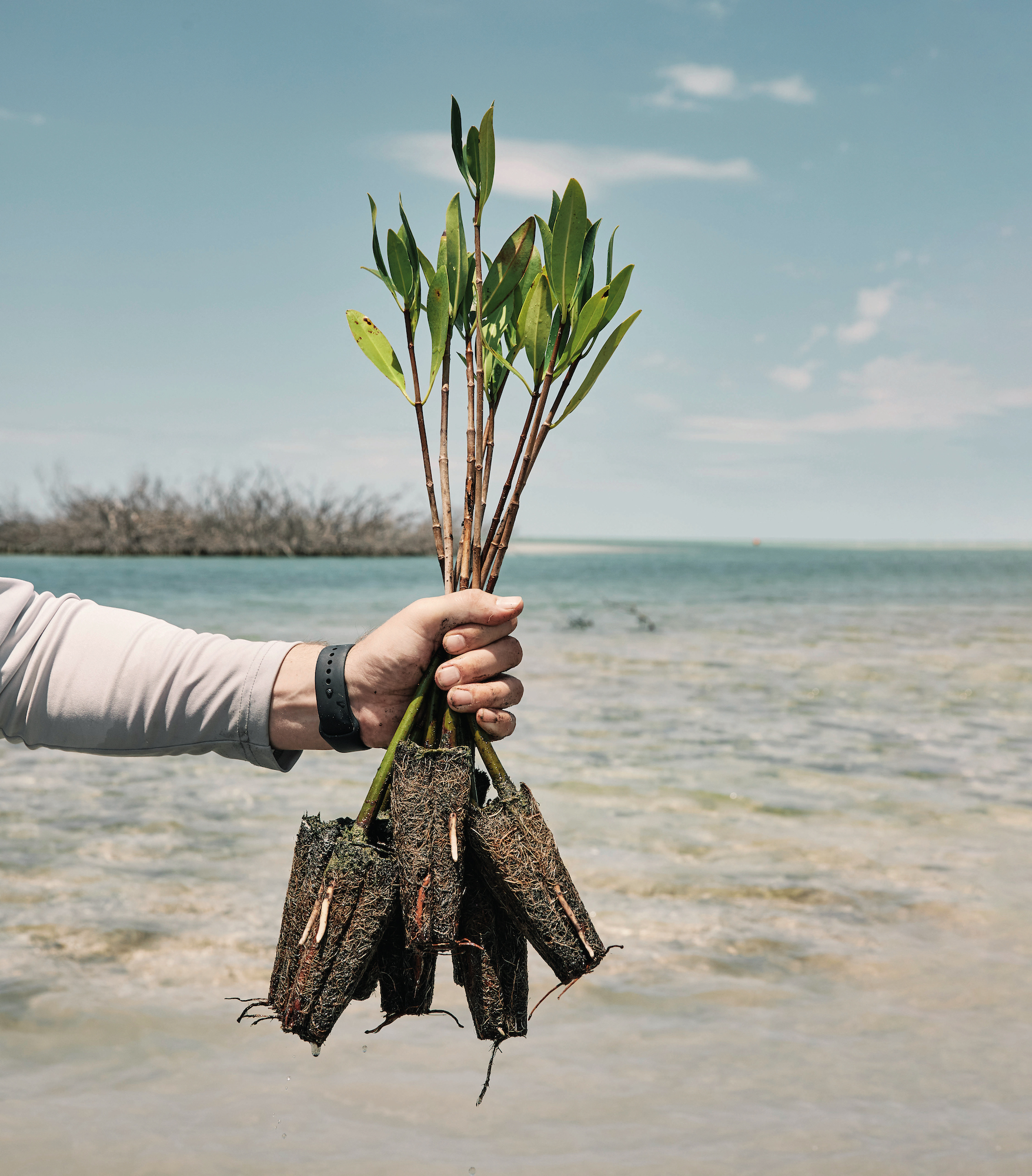
BAHAMAS – When Hurricane Dorian made landfall in the Bahamas on September 1, 2019, its 185-mile-per-hour winds made it the strongest storm ever to hit the archipelago. Dorian ravaged Marsh Harbour on Great Abaco Island, then crossed open water and stalled over the East End of Grand Bahama for more than twenty-four hours. There, the hurricane pushed an unprecedented twenty-foot storm surge over the small fishing settlements of McLean’s Town, High Rock, and Sweeting’s Cay. Some 60 percent of all of Grand Bahama Island, including Freeport, was under water. When the waters receded, the toll on human life, homes, and commercial buildings was staggering: The official estimate of lives lost stands at seventy-four, but scores more are still missing. Damage estimates soared to $3.4 billion. READ MORE
ASIA
To dye for: Indonesia’s carbon-rich mangroves in fashion with women weavers
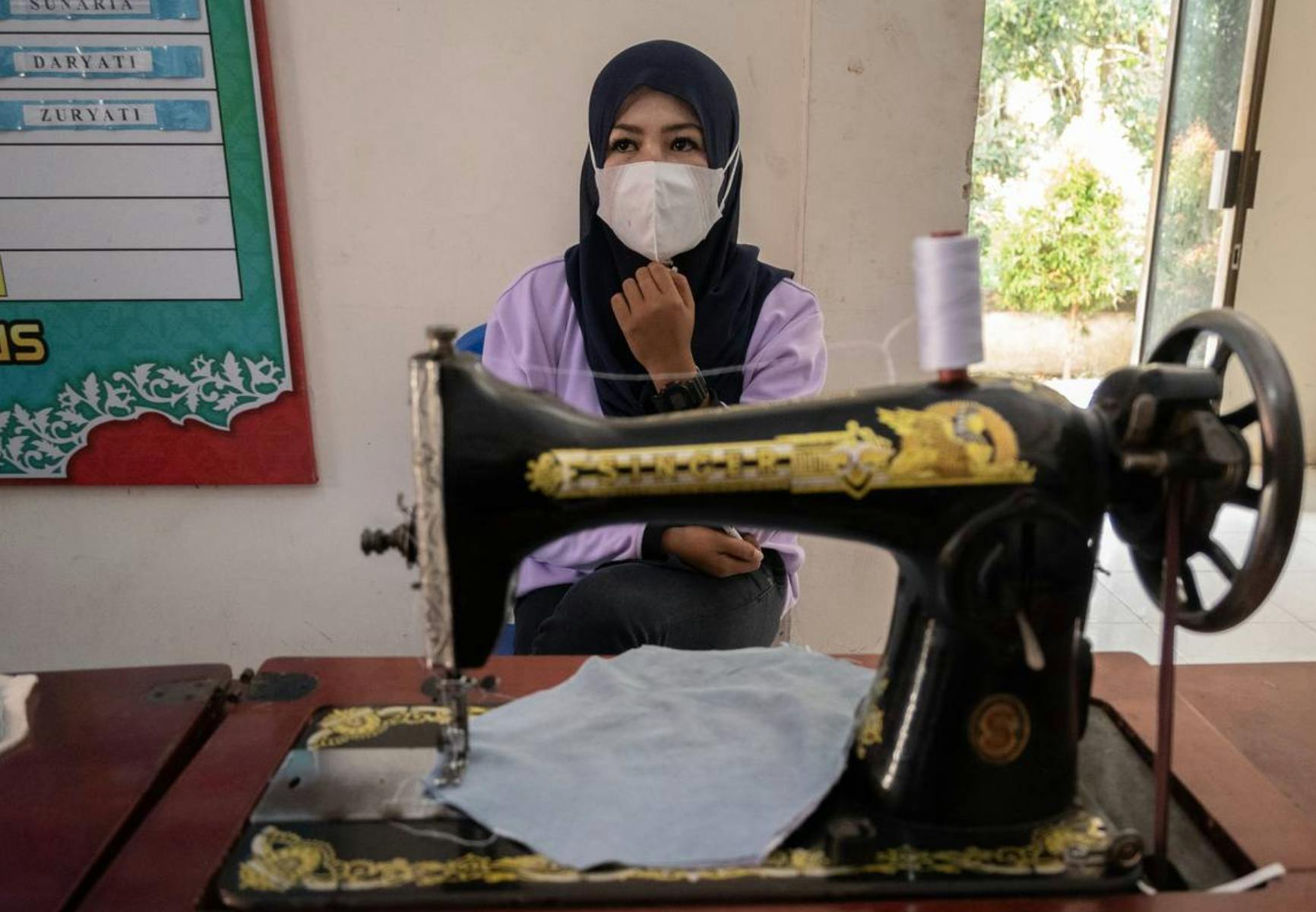
INDONESIA – In a rural office on Bengkalis island, off the northeast coast of Sumatra, 30-year-old Mayasari runs a face mask dyed with tree sap through an antique sewing machine. The day before, Mayasari, who goes by one name, and a dozen other women in Pedekik village learned to make hand sanitisers with an extract from the mangrove trees that fringe the coast. “Alhamdulillah (praise be to god) — if this comes from nature in Bengkalis, then it is great,” Mayasari told the Thomson Reuters Foundation. The Bengkalis training is the first government programme aimed at addressing the double hit from coronavirus and climate change among mangrove-dwelling communities in Indonesia. The face masks made by the Pedekik women’s group are sold for 2,000 rupiah (US$0.14) each, offering a new source of income for members. READ MORE
Plantation of ten billion trees holds immense significance for Pakistan

PAKISTAN – Prime Minster of Pakistan (PM) Imran Khan on Tuesday said that the plan of planting 10 billion trees holds immense significance for Pakistan. While addressing the ceremony after signing the agreement between World Banks and Ministry of Climate Change, PM Imran said that the mutual pact is vital for the prosperity of Pakistan. He added that we are thankful to the World Bank and the country is influenced by the climate change. In order to stop the global warming, country must take important measures. The rain is reduced across the country. Rainfalls have reduced in Dera Ismail Khan (DIK) as well. Various countries are tensed over the matter of culminating environmental pollution in the globe. Due to the increased number of fire, flood and other incidents of catastrophes destroying the forest, the frequency of the rainfall has decreased. The glaciers are melting down due to the increased temperature. READ MORE
In Indonesia’s Sulawesi, a community works to defuse blast-fishing crisis

INDONESIA – Decades of blast fishing have destroyed much of the coral reefs off Indonesia’s Lora village, reducing fish catches. Lora also used to retain a buffer of mangrove trees, which helped provide food security for the 412 families who live along the village’s 7-kilometer (4-mile) coastline. Increased law enforcement and advocacy by NGOs has helped roll back these destructive practices, but other threats loom, including increasingly unpredictable weather and competition from large trawlers. A community organization is seeking to have the region zoned as a conservation area. Blast fishing has long been illegal in Indonesia, and other coastal and island nations, where millions rely on nearshore fishing grounds for income and food security. Around 80% of Indonesia’s 2.4 million fishers operate small boats and fish only near shore, according to Rare, a U.S.-based conservation organization that partners with fishers in Lora. Use of homemade bombs, often fashioned from fertilizer and kerosene, is one of the world’s most destructive forms of fishing, according to the United Nations Environment Programme. The explosives kill indiscriminately, blowing up everything from fish eggs to dolphins, while rupturing vast stretches of coral reefs already endangered by climate change. READ MORE
Build ‘coastal greenbelts’

PHILIPPINES – Siargao became known to the world for its surfing sites but, in the aftermath of Supertyphoon Odette, another feature of the island is getting the spotlight: its mangroves, which have been credited with helping protect adjacent communities from the severest impact of the storm. According to reports from those who survived the destruction that Odette brought to the Visayas and Mindanao regions several days before Christmas, Siargao’s mangrove forests protected residents from a storm surge headed toward Del Carmen, one of the nine municipalities in the island. The municipality boasts of the largest mangrove forest in the Philippines, covering 4,871 hectares. Extreme storms like Odette and Yolanda highlight the need for building what Mindanao marine scientist Jurgenne Primavera calls “coastal greenbelts.” Primavera, recognized by Time magazine as a “Hero of the Environment” in 2008 for her work on mangrove ecosystem conservation, has called for legislation that would create a belt of mangrove forests across the Philippines to protect coastal communities from severe disasters. READ MORE
SMC, govt join to protect NCR’s last old mangrove forest
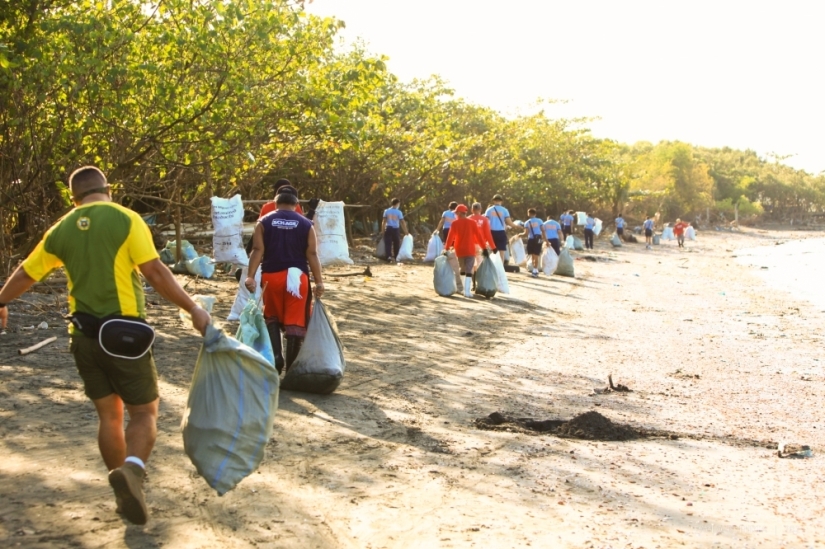
PHILIPPINES – TOGETHER with the Department of Environment and Natural Resources (DENR) and the local government of Navotas, SMC continued to tap more volunteers from its own workforce to scale up efforts to clean and protect Isla Pulo, home to the remaining old-growth mangrove forest in the National Capital Region (NCR). Holding weekly cleanup activities since October, SMC has, so far, mobilized some 80 volunteers, consisting of employees; residents from Barangay Tanza 1; and personnel from the local government of Navotas, the Philippine National Police in Navotas, the 51st Engineers Brigade of the Philippine Army, and the DENR. Volunteers have, so far, collected 3,803 sacks of garbage from the mangrove area, which also serves as a natural barrier that protects nearby cities from storm surges and coastline erosion. The primary goal was to remove the trash that littered the 3.5-kilometer shoreline and mangrove strip of the 26-hectare island. The initiative complemented the company’s cleanup of the Tullahan-Tinajeros river system and helped in flood mitigation efforts. READ MORE
Deepen understanding of Indian mangrove ecosystems, says mangrove scientist

INDIA – Getting things right with mangroves, ecosystems that feature on the global climate agenda for their carbon storage capacity, could set the stage for effective climate action and biodiversity protection in coastal areas, says noted mangrove scientist K. Kathiresan. Kathiresan, who has worked extensively in Tamil Nadu’s Pichavaram mangroves, said restoring mangroves with a focus on biodiversity (diverse mangrove plant species and fauna) and in the right place, instead of growing mangrove monocultures, are crucial to mangrove health. He said that the involvement of local communities in the planning, execution and monitoring of plantation projects and a deeper understanding of fauna and micro-organisms associated with these amphibious defenders is key to climate action centred on mangrove ecosystems. READ MORE
Mangrove Foundation deploys app to streamline data collection on Olive Ridley turtles
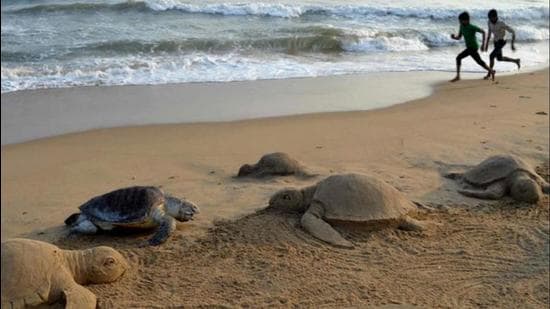
INDIA – Application named M-Turtle to help streamline collection of data on the nesting patterns of Olive Ridley turtles in Ratnagiri, Sindhudurg and Raigad districts where they are known to lay eggs between December and March.The Mangrove Foundation – an autonomous society under the Maharashtra forest department’s mangrove cell – on Tuesday launched a mobile application named M-Turtle to help streamline collection of data on the nesting patterns of Olive Ridley turtles in Ratnagiri, Sindhudurg and Raigad districts where they are known to lay eggs between December and March. The app was created in collaboration with Chiplun-based NGO, Sahyadri Nisarga Mitra, which has been working with the Mangrove Foundation on sea turtle conservation in Maharashtra, and which is the first organisation in the state to start a sea turtle conservancy programme in Ratnagiri’s Velas village. READ MORE
It’s ‘now or never’ to save existing wetlands or flamingos won’t come back
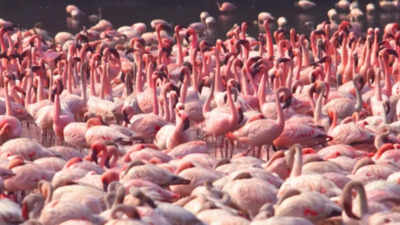
INDIA – Even as the Navi Mumbai Municipal Corporation (NMMC) has started displaying creative, colourful paintings and sculptures of flamingos on the city walls and places for the next Swachhata contest, the local environmentalists have urged the authorities that the very fact that wetland birds like flamingos and ducks are being painted for beautification, it is high time that the civic body and others also protect the existing wetlands at Seawoods, Kharghar and Uran. The activists said that they are also writing to the Raigad and Thane collectors to include these wetlands in the updated list that will be sent to the state environment department by January 15 this year. Adding that it is “Now or Never”, the greens said that this is their final push to protect the surviving wetlands, otherwise, the birds like flamingos will cease to be seen there, and instead ” will only be viewed as pictures on walls and books”. READ MORE














